Home » Grouse Species » Prairie Chicken Hunting » A Guide to Greater Prairie-Chicken Hunting in Kansas
A Guide to Greater Prairie-Chicken Hunting in Kansas
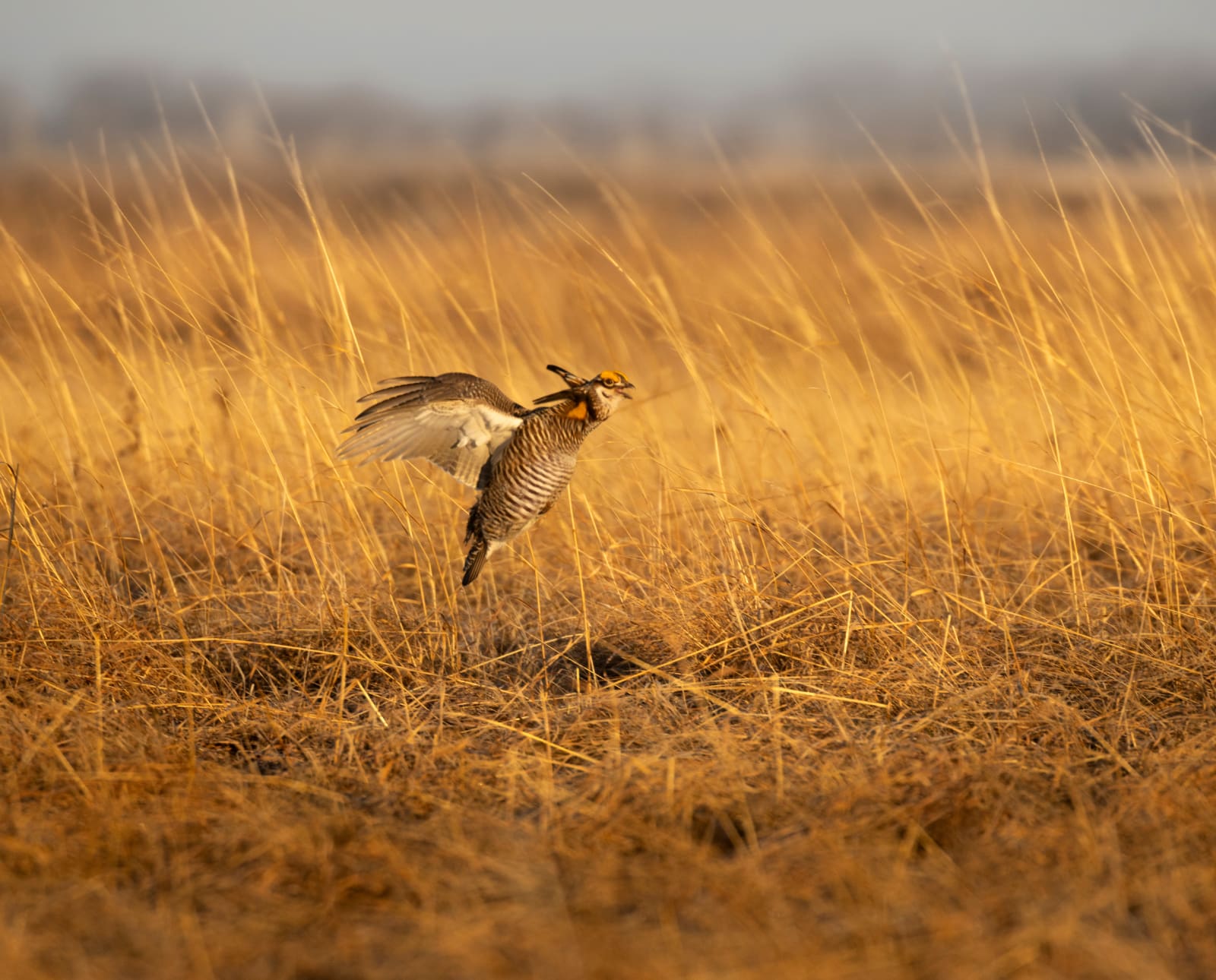
Frank Loncarich has been a wildlife biologist for over 20…
Raised in the upland bird mecca of Kansas, the passion…
Learn how to locate greater prairie-chickens in Kansas’ legendary Flint Hills, Smoky Hills, and High Plains.
Recently, the states of Nebraska and South Dakota have been getting most of the attention from hunters seeking to pursue greater prairie-chickens. This makes a lot of sense, given the good population of birds in these states and the abundance of publicly accessible land available to hunt. However, Kansas has long been a leader in greater prairie-chicken harvest and continues to provide excellent hunting. With a long season and the ability to harvest other species while chasing chickens, you should consider Kansas for your next prairie-chicken hunt.
Listen to more articles on Apple | Google | Spotify | Audible
The Flint Hills
Greater prairie-chickens in Kansas exist in three main ecoregions of the state: the Flint Hills, the Smoky Hills, and the High Plains. The Flint Hills have traditionally been seen as the heart of the prairie-chicken range, and the town of Cassoday, in the southern Flint Hills, bills itself as the “Prairie-chicken Capital of the World.” While this has been historically true due to the large amounts of native tallgrass prairies in the Flint Hills, populations there have declined markedly over the last 20 years due to ranching practices.
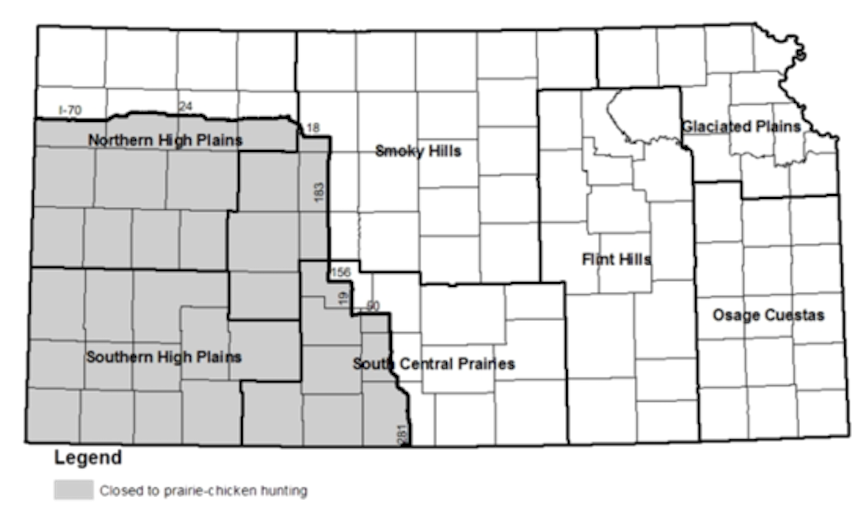
While prescribed burning and grazing are beneficial for greater prairie-chickens, the commonly used range management techniques these days in the Flint Hills utilize prescribed burning over vast landscapes rather than smaller patches. This technique reduces the amount of nesting cover available to hens and populations have suffered.
Additionally, the Flint Hills has very little publicly accessible state-owned land or Walk-in-Hunting-Access (WIHA) lands, so finding a place to hunt can be difficult. That said, I have had some very good early-season hunts in the Flint Hills by knocking on doors and getting access to large tracts of grasslands. However, finding the landowner can be a challenge, as much of the Flint Hills is owned by absentee landowners. The ranch manager might grant access if you cannot track down the landowner.
Another option for hunting in the Flint Hills is targeting prairie chickens in the winter when they feed in harvested crop fields. The Flint Hills have several rivers and creeks that cut through them, and most of the adjacent bottomland is planted for crops, usually soybeans. Prairie-chickens roost and spend their day in the grasslands above the rivers, but they fly down to select fields to feed every morning and evening. Scouting for flying birds or glassing fields just after daybreak and in the late afternoon is an excellent way to identify which fields birds are using. It is often easier to get permission to hunt these fields as the land is usually owned by local farmers who live nearby.
Once access is secured, simply watch the fields and identify the flight path these flocks use to enter the field and set up in that exact flight path. The shooting can be fast but very difficult as the birds descend from the surrounding ridges and have loads of steam. While your pointing dog is useless in such situations, it is still an amazing hunt and one of the few opportunities to pass shoot upland game birds.
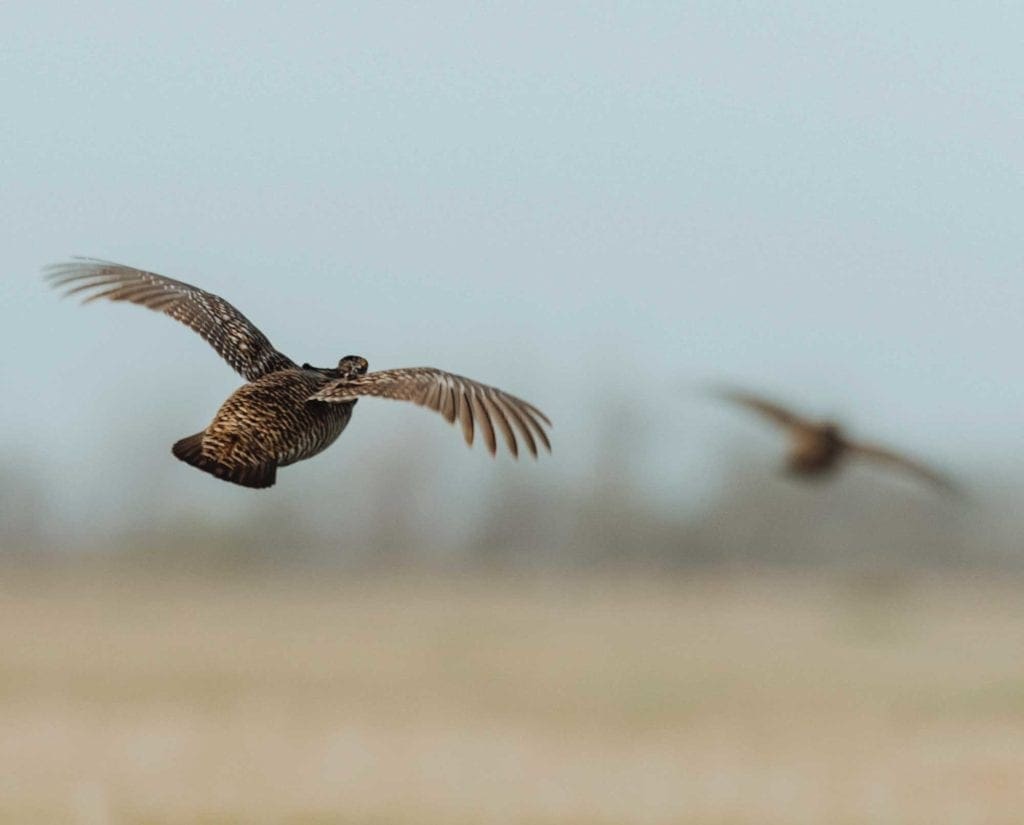
The Smoky Hills
The best ecoregion in the state to hunt greater prairie-chickens is the Smoky Hills. A beautiful landscape that is a mix of large tracts of native prairies and crop fields of wheat, soybeans, and corn, the Smoky Hills have seen a stable to increasing population of prairie-chickens over the past two decades.
Private lands here tend to be owned by the locals, so tracking down someone to ask permission to hunt is relatively easier than in the Flint Hills. There is also considerably more WIHA land in the Smoky Hills, including some large tracts of native grasslands with good bird populations. I remember one opening morning on a WIHA in the Smoky Hills, where my dogs pointed a pair of birds just after daylight. That was the quickest hunt I have ever experienced for prairie-chickens, and I spent the rest of the day scouting and shooting doves.
The Smoky Hills also have large Corp of Engineer reservoirs whose surrounding land is managed by the Kansas Department of Wildlife, Parks, and Tourism for the benefit of wildlife. Hunt these wildlife areas’ thinner, upland grasslands when looking for prairie-chickens.
The best places to hunt in the Smoky Hills are grassland tracts near some type of crop field, even in the early season. While birds don’t need crops to survive, they readily feed in them for abundant food or in disturbed patches between cropland and grassland, which are frequently full of weed seeds and insects. I have had great success in these spots during the early season hunting behind pointing dogs. Also, don’t forget to hunt the tops of ridges or other known lek sites, as birds can nearly always be found near them at any time.
Another option for excellent prairie-chicken hunting in the Smoky Hills is to follow my advice on locating birds feeding in crop fields during the winter. This option can be more effective in the Smoky Hills due to a stronger population of birds and flock sizes that tend to average larger than those in the Flint Hills.
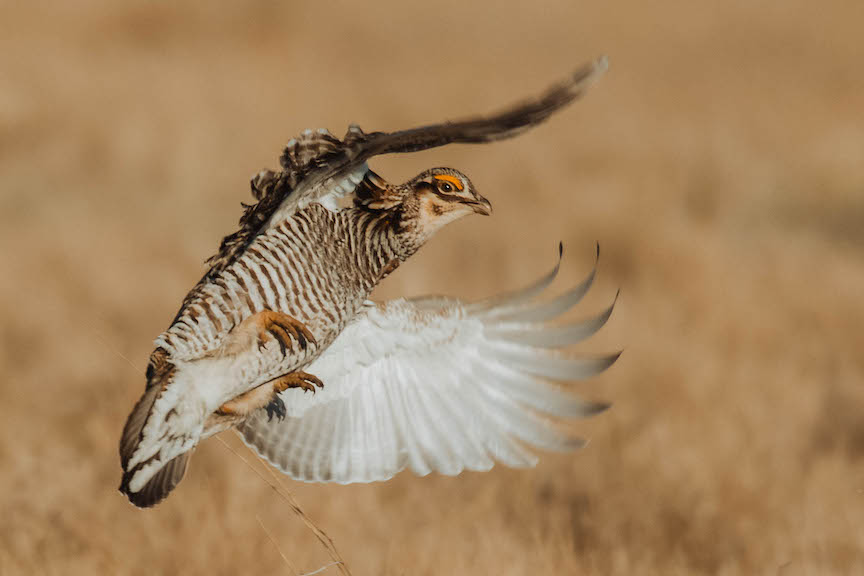
The Northern High Plains
The Northern High Plains region is the final ecoregion for finding prairie-chicken success in Kansas. This area is characterized by large amounts of cropland interspersed with CRP fields and some tracts of mixed-grass prairie. Birds here can be hunted in the early season and winter using the techniques previously described. However, many chickens in this region are taken incidentally to bobwhite quail and pheasant hunting.
Prairie-chickens and pheasants can often be found in similar grassland habitats as long as the grass is not too thick. Prairie-chickens like grass they can see out of, and many Kansas CRP fields are filled with tall grasses that chickens mostly avoid. Look for them in grazed CRP fields or native rangeland.
As with the Smoky Hills, WIHA ground is abundant in the Northern High Plains ecoregion. Not all of them will be suitable for chickens, but you’ll find some with the right habitat to hold birds. Also, knocking on doors might gain you some access, particularly on native range lands away from more traditional pheasant and quail ground.
As I noted above, Kansas is a place where hunters have the chance at multiple species of upland game birds in the same walk. This is especially true in the Northern High Plains and Smoky Hills, so be on the lookout for chickens even when pursuing a different species.
Things to Remember when Prairie-Chicken Hunting
One huge note of caution when hunting greater prairie-chickens in Kansas is to remember that the lesser prairie-chicken, a federally threatened species, also exists in the state, and their population overlaps that of the greater just south of Hays. As a result, most of south-central and southwestern Kansas is closed to prairie-chicken hunting. The closed region is clearly marked by highway boundaries, but be aware of where you’re hunting. Even if you flush a greater prairie-chicken in the closed zone, it is still off-limits to harvest.
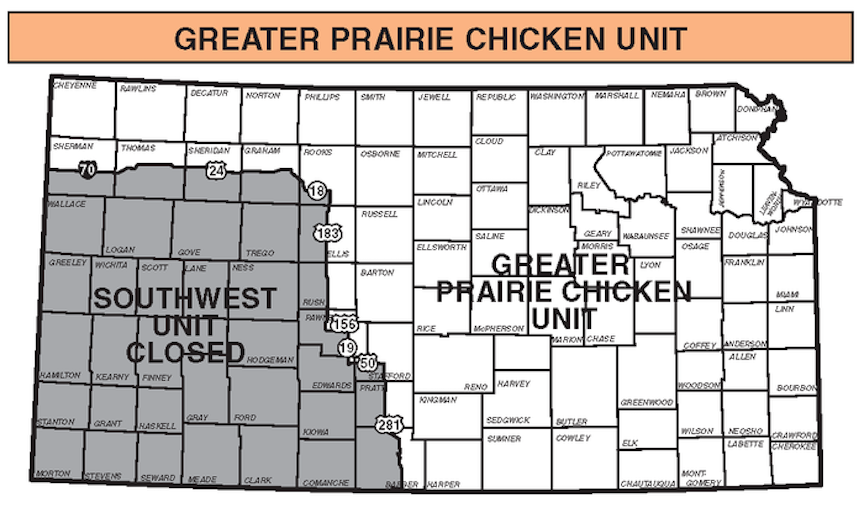
The greater prairie-chicken is truly a remarkable species, and a hunt for them should be on everyone’s bucket list. Instead of heading to the well-known and often crowded public grasslands of Nebraska and South Dakota, I suggest giving Kansas a try. You find plenty of birds with good access in certain regions. Plus, I’ve found landowners there to be especially good about granting me access to private lands if you’re there for chickens only. The birds are present in good numbers; give it a shot.
Frank Loncarich has been a wildlife biologist for over 20 years, specializing in bobwhite and grassland management. He is also a Habitat Consultant for Land and Legacy.
Raised in the upland bird mecca of Kansas, the passion for upland birds was born at a young age for Kyle Hedges. He has now spent over 25 years managing upland game habitat on public lands in Kansas and Missouri for State Conservation Agencies. He also works as a Habitat Consultant for Land and Legacy, assisting landowners across the country with improving their properties.





